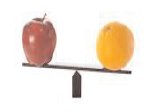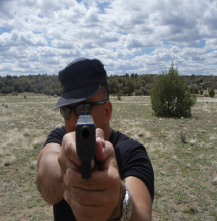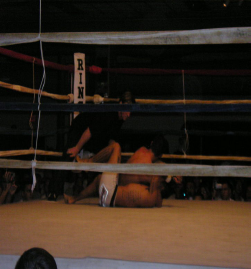Jun 04, 2012
 Last night a group of my students started a familiar conversation comparing what we do in Combatives and Defensive Tactics to MMA and traditional martial arts systems. In particular they were saying they liked combative systems such as Systema, Krav Maga, and MCMAP (The U.S. Marine Corps Program) better than combat sports like MMA or the traditional martial arts.
Last night a group of my students started a familiar conversation comparing what we do in Combatives and Defensive Tactics to MMA and traditional martial arts systems. In particular they were saying they liked combative systems such as Systema, Krav Maga, and MCMAP (The U.S. Marine Corps Program) better than combat sports like MMA or the traditional martial arts.
I let them run for awhile until one of them asked me to chime in. In one sense they are correct. Combative systems are better at doing what they were designed to do. They are made to help you survive in a sudden life and death struggle. They were not designed to help you become a good person or bring you on a path of enlightenment. I’m not saying those things are not possible, just that they are not part of the design of the program. In the military you have people who have already been trained up to a certain level of combat fitness and moral conditioning. Combatives are merely icing on the cake in developing the complete operator.
 Life and death struggles may feel like forever when you are in them, but the truth is that most of them are extremely brief. Without weapons they last fifteen seconds or less. With a firearm the average gunfight is only three seconds long. MMA fights with equally matched opponents can go on for half an hour or more while traditional martial arts sparring matches are somewhere in between those extremes.
Life and death struggles may feel like forever when you are in them, but the truth is that most of them are extremely brief. Without weapons they last fifteen seconds or less. With a firearm the average gunfight is only three seconds long. MMA fights with equally matched opponents can go on for half an hour or more while traditional martial arts sparring matches are somewhere in between those extremes.
In looking at the big picture the value of communication skills cannot be undervalued. Programs like Verbal Judo, Adrenal Response Agression Training, and The Dale Carnegie Course all have a place in preparing you as a complete martial artist. In bottom line truth the simple yet overlooked value of situational awareness is paramount. To avoid any conflict by knowing it about well in advance is an ace that trumps any set of fisticuffs you could endeavor to pursue.
Those aspects set aside, the traditional, MMA and Close Combat arts all have very valuable attributes. In a very formal traditional martial art such as Aikido you have a level of mental, emotional, and spiritual development that is more important within the context of the art than the actual combatpracticality. In MMA you have a level of fitness that needs to be there to give you any chance of surviving in that environment. You also have to develop an ability to consistently adapt since the fights are very long! A serious mixed martial artist is one of the best conditioned athletes in the world. Both a traditional Aikido man and an MMA fighter could find their skills valuable in a street situation, it would depend a lot more on who they were as an operator and how they were trained than what style or system they were actually trained in. People love to take sides, but in the bright light of truth there is a value to all the different styles and systems otherwise they wouldn’t all exist. Each one brings something important and beneficial to the table. It just depends what you need. It’s all about “having the right tool for the job” as opposed to the “right job for the tool”. You can’t make three criminals intent on kidnapping your wife decide to “spar” you one at a time in a controlled environment with padded safety gear and a referee. That said you would be the one at fault both legally and morally if you caused serious injury to a drunken friend who tapped you on the shoulder to ask where the bathroom was.
 There are four types of liability you have to consider because when you truly train you are creating subconscious program that will run on its own when you feel the stimulus.
There are four types of liability you have to consider because when you truly train you are creating subconscious program that will run on its own when you feel the stimulus.
First there is tactical liability. This means making the best decision under stress to ensure your survival. If you are in Iraq or Afghanistan fighting for your life then you need to use the strategy and tactics that will enable you and your team to survive. It can be that simple. Any slow decision process or silly move will get you killed and the combat environment is extremely unforgiving. Try doing a jump spinning heel kick wearing sixty pounds of gear and you will end up on your bum.
Secondly, there is criminal liability. In a civilian environment you will have to show that you were in legitimate fear of your life before taking someone else’s. You can’t give it back after all is said and done. This is why it is always better to just walk away and let the other guy get the go points unless you know you have no choice but to save your life or protect someone else’s.
Thirdly, there is civil liability. This one is the worst because it is all about people’s opinions. A judge and jury may find you not guilty of any criminal wrongdoing, but in a civil proceeding you could lose everything you own as well as whatever reputation you have built up in your life.
Fourth, you must consider moral liability. Even if there are no witnesses and no one else knows you were there, you know and God knows. There may be no jail time or financial burden to be paid, but karma can be a bitch and taking someone’s life is not something you can undo.
The bottom line is that if you are going to use extreme measures in a fight you better be darn sure it is an extreme situation before you go too far. You need to have a little “switch” for target identification so you act with conviction and confidence in making a just decision under stress. As students of IMB and legacy of Bruce Lee’s Jeet Kune Do, many of you already realize that everything can be great for you. It is just a matter of doing the hard work of daily training to see what works for you and “absorb what is useful”.
MMA as well as Traditional Martial Arts and Combatives are all excellent tools for the jobs they were actually designed to do well. I have been a practitioner of all three at different times in my life. If I had children they would learn them all. I would start them with the traditional martial arts from early childhood throught the age of reason.
When a child is very young, developing self-esteem, selfdiscipline, and overall character are paramount. The structure and guidance found in the traditional arts are ideal for this. Here you can also find a way to make training really fun without much injury. A crawl-walk-run approach is par for the course as ideal as an introduction to the warrior path. Right and wrong are being defined as a child grows into their elementary school years, so up to their teens this process is better guided in traditional arts.
 Much of a child’s moral character is formed by age 13 so it is then that I would build on the traditional arts with some MMA training because it is in middle school and high school that kids face getting into a lot of fights. It is also the harsh reality that kids today are huge MMA fans and goof around with it all the time. If your kids are going to have to face off against it, they need to know how to enter that arena and win.
Much of a child’s moral character is formed by age 13 so it is then that I would build on the traditional arts with some MMA training because it is in middle school and high school that kids face getting into a lot of fights. It is also the harsh reality that kids today are huge MMA fans and goof around with it all the time. If your kids are going to have to face off against it, they need to know how to enter that arena and win.
I wouldn’t worry too much about my kids being the ones who actually started the fight if they had already developed a traditional martial arts base foundation first.
After they turned 16 I would introduce close combat skills so they would be well prepared if they chose to serve in the military after graduation.
A traditional martial artist can be much better balanced in his/her inner character development because it is par for the course. The intentionally slow progression of skill development allows the mental understanding of the art and emotional self-control to develop ahead of the more dangerous skills.
My first martial art was Judo and in Judo you only learn throws and presses first. When you are 11 you begin to learn chokes because before then the neck is extremely fragile. It is not until age 15 that you are allowed to perform arm bars because broken joints are serious business for youth going through puberty. In retrospect this was a good thing as a sense of moral responsibility is developed at each stage.
An MMA fighter is in far better overall strength, endurance, whole body coordination, and overall fitness than most martial artists because he/she needs to be. They also develop a high pain threshold because they are on the receiving end of a lot of hits and submissions as part of their core base of training. In the 90’s I fought 21 MMA matches and quite honestly it develops a level of toughness that is rare to find in a regular martial artist.
For a one-on-one altercation devoid of lethal intent, a strong set of MMA skills will win you the day. It is more than enough to earn respect in a high school or college fight, which is to say. In a situation like this it is the right tool for the job, especially the Jiu-Jitsu portion.
Jiu-jitsu is wonderful because you can control and contain a situation without inflicting serious injury. I remember using only Judo and Jiu-jitsu to overcome adversity a number of times. More often than not you can emerge from the fight having also earned a new friend because you have not visibly injured your adversary.
Combative close combat skills are another animal entirely. They are designed to save your life when all other systems have failed. They are a measure of last resort when your primary weapons and the rest of your fire team have failed to neutralize the problem. They are designed for “kill or be killed” situations. All movie, television, video games, and graphic novel fantasy set aside, they require a much higher level of moral responsibility and legal accountability. If you train for close combat then you simply carry a higher responsibility just like someone who carries a gun for a living. You have to function with a great sense of awareness, responsibility, and compassion for all life around you. You are basically carrying a loaded gun everywhere you go because you are the weapon.
Even in firearms training the truth always stems from the actual operator, not so much form the type of weapon, choice of firearm, or the existence of the gun itself.
I have had someone try to kill me at close range with a sub-machine gun and miss. He was fast, but he was poorly trained. The unfortunate truth for him is that a slow hit will beat a fast miss every time.
Though an enemy might have a more powerful firearm the bottom line rests in the complete physical, mental, emotional, and spiritual development of the operator. A screwdriver might be able to open your car door, but you would rather use a key if it were your car.